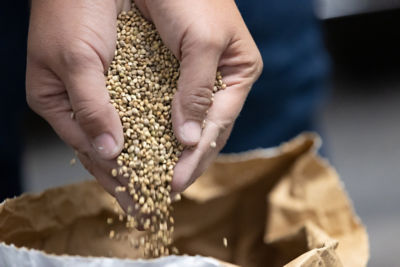Causal Agent
Leveillula taurica (anamorph: Odiopsis sicula) on pepper and eggplant, and Golovinomyces cichoracearum (synonym: Erysiphe cichoracearum (anamorph: Oidium cichoracearum) on eggplant
Distribution
Worldwide (L. taurica); Asia (G. cichoracearum)
Symptoms
Leveillula taurica: During initial stages of infection, lightgreen to bright-yellow blotches appear on upper surfaces of leaves. These areas later turn necrotic. Infected leaves curl upward, and a powdery, white growth is visible on the underside of leaves. When lesions are numerous, they often coalesce, resulting in general chlorosis and leaf drop. The disease progresses from older to younger leaves. Fruits on affected plants are overexposed to sunlight and may develop sunscald.
Golovinomyces cichoracearum: Initially, small circular to irregular, whitish, powdery areas appear on upper and lower leaf surfaces. Infected areas can expand to cover leaves, petioles and stem tissues. Older leaves are affected first, and later, the disease progresses up towards new growth. Affected leaves eventually turn yellow and necrotic.
 Sporulation on eggplant cotyledons.
Sporulation on eggplant cotyledons.
 Sporulating lesion on eggplant stem.
Sporulating lesion on eggplant stem.
Conditions for Development
These fungi have a wide host range. Airborne conidia from previous crops or weeds can be carried long distances by wind and act as initial sources of inoculum. High relative humidity is not required for infection. Warm temperature and low light conditions generally favor disease development.
Control
Apply protectant fungicides before an epidemic or immediately after the first symptoms are observed. Provide for air circulation around plants and light penetration through the canopy. Excessive fertilization has been reported to increase the severity of powdery mildew epidemics.



